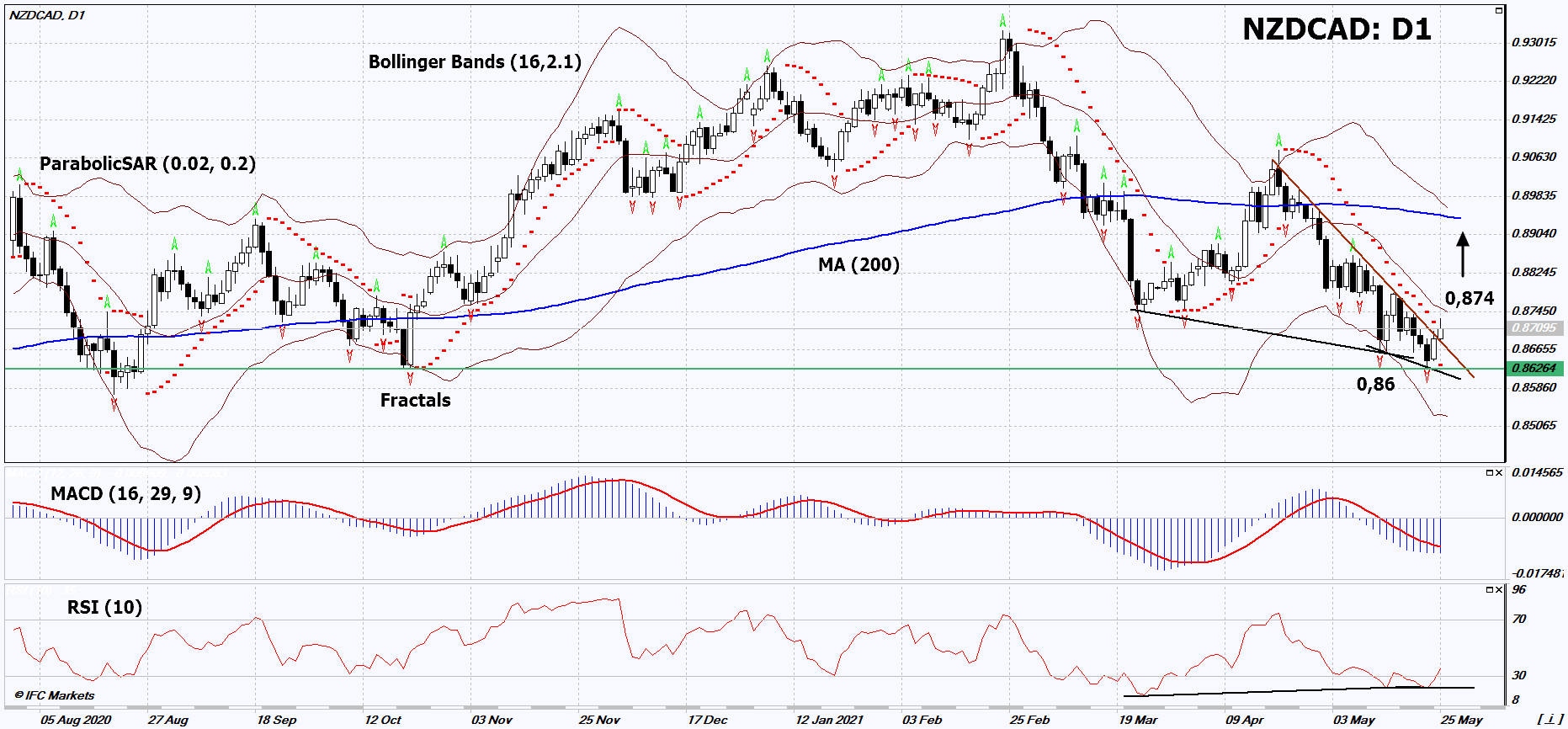Recommendation for NZD/CAD:Buy
Buy Stop : Above 0.874
Stop Loss : Below 0.86
RSI : Buy
MACD : Sell
MA(200) : Neutral
Fractals : Neutral
Parabolic SAR : Buy
On Balance Volume : Neutral
Chart Analysis
On the daily timeframe, NZDCAD: D1 went up from the downtrend. A number of technical analysis indicators have formed signals for further increase. We do not rule out a bullish movement if NZDCAD: D1 rises above its latest maximum: 0.874. This level can be used as an entry point. The initial risk limitation is possible below the Parabolic signal and the last lower fractal: 0.86. After opening a pending order, we can move the stop-loss to the next fractal low following the Bollinger and Parabolic signals. Thus, we change the potential profit / loss ratio in our favor. After the transaction, the most cautious traders can switch to the four-hour chart and set a stop-loss, moving it in the direction of the trend. If the price overcomes the stop-loss (0.86) without activating the order (0.874), it is recommended to delete the order: there are internal changes in the market that were not taken into account.
Fundamental Analysis
On May 26, 2021, a regular meeting of the Reserve Bank of New Zealand (RBNZ) will take place. Will the NZDCAD quotes rise? Their rise means the strengthening of the New Zealand dollar against the Canadian dollar. A decrease in the RBNZ rate (0.25%) is not expected, but investors do not exclude that the New Zealand Central Bank will reduce the economic stimulus program. It could also improve its economic forecast for 2021. Inflation in New Zealand in the Q1 of this year amounted to 1.5% in annual terms. RBNZ’s Large-scale asset purchases program (LSAP) has a volume of NZ $100 billion. So far, it is assumed that it will be active until the middle of next year. A negative factor for the Canadian dollar may be an increase in inflation in April to 3.4% in annual terms. This is much higher than the Bank of Canada rate, which is 0.25%.
